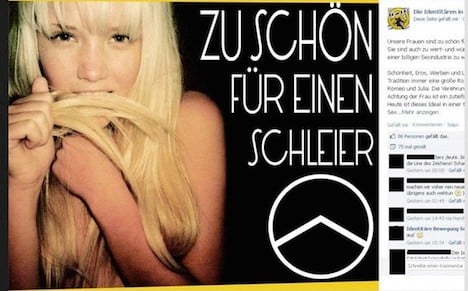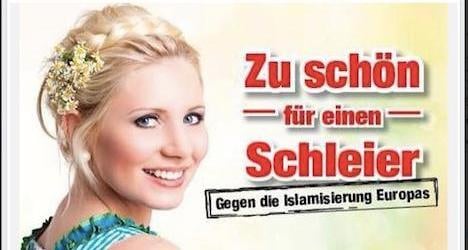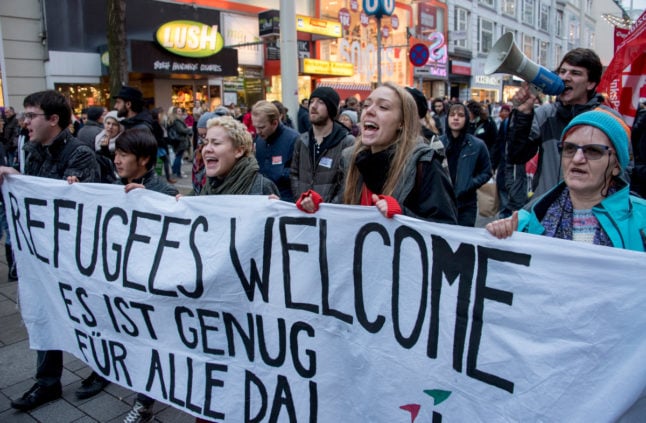The poster references a recent call by the FPÖ for a ban on the public wearing of the burqa, for which the party proposes to introduce a private member's bill into the Austrian parliament next week.
The image is linked to Upper Austrian provincial leader Manfred Haimbuchner, who has repeatedly warned of the threat of Islamification and problems with integration in Austria.

The FPÖ Watch Facebook group called out Strache for using an image that has license terms restricting its use for political purposes. Photo: Facebook screenshot.
A surprising note of support for anti-burqa sentiment came from Austrian Green party politician Efgani Dönmez, who suggested that families where women were required to wear the burqa should be denied access to state financial support.
"I see no reason why systems which oppress women should be financed with public money," he told the Heute paper.
This view was quickly denounced by Green party leader Eva Glawischnig, who said that Dönmez was stating his personal opinion, which was not necessarily shared by other members of the party.
Social Democrat women's minister Gabriele Heinisch-Hosek (SPÖ) reiterated that she saw no need for a ban on the burqa in Austria, according to Die Presse.
The minor economically liberal party Team Stronach – the eurosceptic populist party founded by a Canadian auto-parts billionaire with Austrian roots – considers the burqa to be 'hostile' for integration, and thus opposes its use in Austria.
Image Rights Ignored
Analysis of the woman's image by a Freedom Party critic known as FPÖ Watch revealed that the poster used a stock photograph from the Fotolia image company. The specific conditions for use of this image preclude its use in any political activity, and require a clear copyright notice to be retained, neither of which conditions were observed.

The Fotolia license precludes political use. Photo: Facebook
The image is one of the latest in an on-going series of political images, the latest of which from the Freedom Party's youth branch showed a topless woman, implicitly criticising Austria's recent winner of the Eurovision Song Contest, Conchita Wurst. It described how a 'real woman' didn't need a beard and a penis to be successful.

Extreme-right group Die Identitäre Bewegung (the Identity Movement) have issued a similar poster. Photo: Facebook
Further investigation revealed that the FPÖ appear to have copied the idea for the poster campaign from the extreme-right-wing group Identitären Movement, who are active in France and Germany. The group is also active in Austria, leading Vienna's Mayor Michael Häupl to call for it to be banned.



 Please whitelist us to continue reading.
Please whitelist us to continue reading.
Member comments